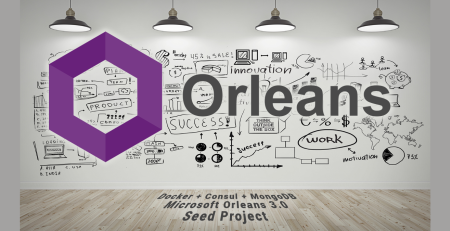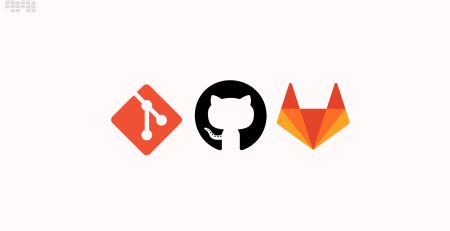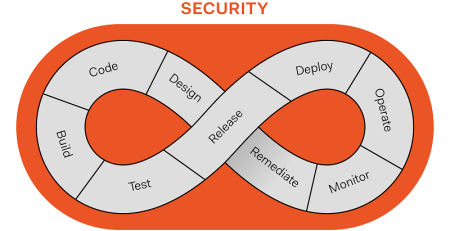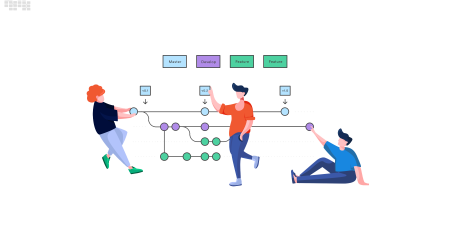Project Management Success Factors For Startups
Consider a beautiful tree that has the potential to bear fruit every season. It does not come for free; you must care for it. Water the seedling, provide shelter from extreme weather, and keep pests at bay. Manage your resources so that they can last for several months. The same is true for effective project management. Many businesses, particularly startups, have great ideas and deep domain knowledge but lack the project management skills required to build products with long-term impact. Here is a list of key success factors and practical solutions offered by companies like ours.
Successful project management starts with a strong team
Saying that every project involves risks would be meaningless if it weren’t for all the things that can go wrong. And it’s not just about the software. Product design, user experience (UX), and user interface (UI) are all important factors in gaining users’ trust. A strong team is required to develop a FinTech software product, where so much depends on trust. To be specific, senior developers.
Forming a team of developers with experience managing complex projects is a good practice. Choose individuals who have mature competency in all areas critical to your application. They must be capable of making independent decisions and recommending solutions. It is critical that they not only have seniority, but are also at ease making intuitive decisions based on years of development experience.
Juniors and even experienced developers lack the necessary experience. They have a tendency to overthink and overanalyze everything, which slows down progress. Every project begins with a high level of uncertainty, and you cannot afford to work with inexperienced personnel. End-to-end development requires qualified software developers and product owners who can work under pressure and take ownership of the end result.
Minimum viable product (MVP) for quick go-to-market delivery
Modern software is designed with rapid market validation in mind. It is especially important for startups because they typically have limited budgets and cannot afford to waste them on something that does not work. Even if a company is able to secure another round of funding, it must demonstrate to the investors that the money is well spent. Going to market with a core functional app (minimum viable product—MVP) has enormous advantages. It enables the introduction of a product to a real audience and the testing of business models, as well as responses to the most important features. The fewer the functionalities for the initial launch, the easier it will be to manage and finance the project. And then build on top of that.
Creating a new product typically begins with a high-level definition. At this early stage, tools such as roadmaps and product strategies aid in the analysis and definition of the product. Preparation is beneficial on multiple levels. Developers understand what they’re up against and how much work is required for the project. Planning also helps to discipline the effort when new ideas arise, particularly after client feedback.
These additional changes are frequently minor, but they can accumulate over time and suddenly go far beyond the initial concept. To combat this and put a product on the market that is “good and good enough”—not perfect in every way—restraint is required. If the temptation is not overcome, the project will take longer and cost more money.
Good product management: rapid response and validation of ideas
Software product management frequently involves abrupt changes in direction. You must consider reality—the finished product may not look exactly as you imagined it in the beginning. Product backlogs, roadmaps, and product features are all different things. Operational and production risks are a completely different ballgame. Successful project management requires quick adaptation to product development realities.
Some things can be done the right way, but it may cost more money or time. Pivots are essential for startups, even when the product is still being developed. A seasoned Product Owner who understands how to validate ideas is essential. This specialist will contact potential users, analyze their requirements, validate concepts, and test functionalities. Not every product owner prefers to work in this manner, but it is a very effective method. The heart of product management is in making sound decisions about experimentation, risk-taking, and validation.
Product management necessitates ongoing collaboration with the development team. It’s not a task that can be completed solely by the product owner. The success of project management is dependent on multiple stakeholders. When sprints are performed under pressure and in unstable conditions, with numerous unknowns along the way, teamwork can save the day. That is why top product owners validate the project with the client and the development team on a regular basis. It is necessary to comprehend both the product’s concept and its technical boundaries.
Testing and experimentation beats planning and conceptual thinking
It’s easy to be seduced by the sheer idea and the projected profits, whether you’re creating an innovative product with no direct competition or introducing a twist to something already available. You can have fantastic plans on paper, but few of them will likely translate well into the final product. You can help the application reach its full potential by being willing to take a step back or try new directions. Innovative solutions to difficult problems necessitate not only the product development team, but also you, the creator of this ground-breaking app.
Keep in mind that changes made during the brainstorming process will have an impact on the product and may affect the timeline. All stakeholders’ agility, combined with high-level technical competency, is required to move the project forward. All of this puts the app’s founder under duress. You need time to discuss all changes, go through them without rushing, and work with the team at least several hours per week. It takes time to track progress but also to respond to feedback and consider new ideas that come with development.
Gates for seamless decision making and effective budget control
You can’t simply develop a new product until the funding runs out, then wait for a new funding round to pick up where you left off. Because startup projects necessitate both discipline and speed, developers must tailor the process to the needs of the product. They must be confident that a given budget is sufficient to do something reasonable and release the app on time. Because product development is ongoing, all stakeholders must be able to see potential changes in real time.
This is where the gates mechanism comes in. Gates are points in a project where important decisions must be made. You gain control by implementing gates in a project (each with a real meaning). The more control you have, the more changes you can make while staying within your budget. Business values and spending must go hand in hand. For example, after spending 20% of the total budget, we should all have a good idea of what the product is and development should begin right away. Is everything going as planned at the 20% threshold? If so, we’re on our way. If not, we’ll return to the table and consider the product holistically. That is the gate. A moment to consider what went wrong and what we can do to keep the project on track.
Startup projects are difficult to manage and frequently do not make sense at any stage. “The concept is immature. The technology stack has been misidentified. The project will cost three times what we anticipated. Wrong decisions have forced us to a halt.” That is why you need a sufficient number of strategically placed gates to mitigate risks and control the project from start to finish. Even if you are aware that things will change.
Gates can benefit from relevant estimations in terms of both time and cost. You can supplement them with a technique known as the “earned value mechanism.” We compare the project estimation to the budget realization and determine what portion of the project has already been completed. These are excellent examples of keeping the product under wraps while maintaining the necessary agility.
Company culture drives KPIs and delivers results
The five factors listed above are critical, but they are somewhat technical. Company culture is the one thing that unites them all. All of these mind-boggling changes, rapid prototyping, rapid development, and constant communication would be impossible without a supportive environment. It all comes down to people and their ability to serve clients in the end.
To make an idea a reality, a combination of project management, operations management, and software development is required. Without it, the client’s budget will run out long before the product is finished. What distinguishes an artist from a craftsman is the incorporation of culture into business processes. There’s nothing wrong with the craft, but it’s not always enough. Growing a tree until it bears juicy fruits, for example, necessitates both knowledge and commitment—and that’s the next level.













Leave a Reply